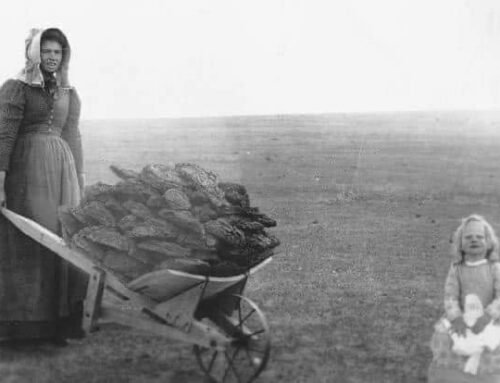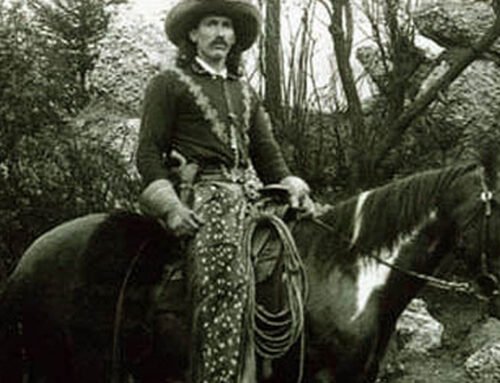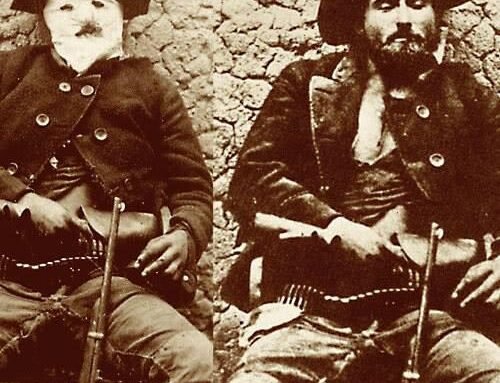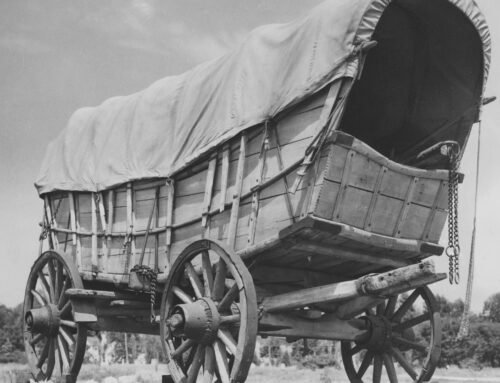Stagecoach robberies
By western author Nick Brumby
 “Whoa there pard, your money or your life. Don’t fuss now – you’ve only got one life to lose, and I’ve got a passel of rounds pointing your way.”
“Whoa there pard, your money or your life. Don’t fuss now – you’ve only got one life to lose, and I’ve got a passel of rounds pointing your way.”
Stagecoach robberies quickly became a popular way for Old West outlaws and bandits to get easy access to payrolls, bankrolls and pretty much any other type of roll the driver had on board.
How popular were stagecoach robberies? Wells Fargo stages were robbed nearly 350 times between 1870 and 1884. Arizona alone had 129 stage robberies between 1875 and 1903. In California alone, Wells Fargo was the victim of 74 stage robberies.
Across the frontier West, highwaymen usually robbed stages by selecting a site where the stagecoach would have to slow down. Then they approached the vehicle with guns drawn. More than half of stage robberies remain unsolved.
During a stagecoach robbery anything could happen. It depended on the mood of the robbers and the behavior of the passengers. Stagecoach robbers were not usually prone to shooting anybody, as a murder warrant is much more serious than robbery.
 A well-known example of the opposite occurred one dark night north of Tombstone on March 15th, 1881 when three members of the notorious Cow-boys opened fire without warning, killing the driver Bud Philpot. The famous lawman, Bob Paul, was riding shotgun. He grabbed the reins drove past the would-be robbers. A hail of bullets was fired as the stage sped away, killing passenger Pete Roerig. This senseless killing was a crucial factor in turning public opinion against the loose-knit band of lawless desperadoes who’d been terrorizing Cochise County and northern Mexico.
A well-known example of the opposite occurred one dark night north of Tombstone on March 15th, 1881 when three members of the notorious Cow-boys opened fire without warning, killing the driver Bud Philpot. The famous lawman, Bob Paul, was riding shotgun. He grabbed the reins drove past the would-be robbers. A hail of bullets was fired as the stage sped away, killing passenger Pete Roerig. This senseless killing was a crucial factor in turning public opinion against the loose-knit band of lawless desperadoes who’d been terrorizing Cochise County and northern Mexico.
Davis was a well-known and presumably well-liked stage robber up near Virginia City, Nevada. He was a most cultured rascal, serving hors de oeuvres and champagne on a silk tablecloth to the passengers while his gang blew the strongbox.
It was possible for two stages to be robbed at the same time. One occurred in August 1882 between Prescott and Phoenix when two highwaymen wearing silk neckerchiefs for masks, held up the Black Canyon Stage Line. Among the passengers was a Dr. Lloyd and merchant, Isador Solomon. After checking the doctor’s pockets and finding only thirty dollars the bandit dryly remarked, “You are about as hard up as I am,” and gave the doctor his money back. Solomon surrendered a gold watch and fifty-five dollars. The robbers, who seemed to be relaxed old hands at robbing stages, talked and joked with the passengers as they were tearing open the strong box and Solomon took the opportunity to compliment them on their good behavior and then asked if he could have his watch back. The outlaw smiled and gave it back.
 Also known as the Poet of the Sierra or the Gentleman Bandit, Boles was noted for being polite and never firing a shot. Detectives managed to track him down to San Francisco. He was sent to San Quentin where he learned pharmacy skills and vowed never to return to prison. His trail runs cold after he was paroled.
Also known as the Poet of the Sierra or the Gentleman Bandit, Boles was noted for being polite and never firing a shot. Detectives managed to track him down to San Francisco. He was sent to San Quentin where he learned pharmacy skills and vowed never to return to prison. His trail runs cold after he was paroled.
Dick Fellows was a legendary California stage robber but his reputation far exceeded his criminal exploits. Fellows successfully robbed numerous stagecoaches before he was caught in 1870 and sent to San Quentin. He volunteered to work in the library and teach Sunday school. In 1874, he was released but was back to the stick-up game by 1875. Fellows broke his leg while fleeing but still managed to get away with $1,800. He was caught and again landed in San Quentin. He feverishly wrote letters advocating for his pardon, pledging to stop his criminal ways. Again he took part in religious services and worked in the library.

In 1881, he was released but wasn’t out long before he held-up another stagecoach. He was caught and sent to Folsom Prison in 1882. When an inmate was killed in an 1889 accident at the quarry, Fellows requested a funeral service for the man. He was pardoned by the governor in 1908, having spent nearly 40 years of his life in prison. According to many later reports, he changed his name and was living in another state teaching Sunday school and writing for magazines.
The last holdup of a horse-drawn stage out West took place near Jarbidge, Nevada, in 1916. The Jarbidge Stage Robbery, named after the Nevada town in which it happened, only netted $4,000 (about $9,000 today) and a bag of silver coins when U.S. mail carrier Fred M. Searcy was ambushed.
While the bandit received several offers for a reduced sentence to give back the $4,000, he never revealed its whereabouts,
Maybe it’s still out there in Jarbidge Canyon, waiting to be discovered.

About Nick Brumby
I like a good story. And of all stories, I love westerns the most.
As a kid, I spent far too many afternoons re-watching Clint Eastwood spaghetti westerns, picking up ‘Shane’ for just one more read, or saddling up beside Ben Cartwright when ‘Bonanza’ was on TV each afternoon.
I’m a former journalist and I love horses, dogs, and the occasional bourbon whiskey. I live with my wife, daughter and our ever-slumbering hound in a 1800’s-era gold mining town – our house is right on top of the last working gold mine in the area. There may not be much gold left, but there’s history wherever you look.
I hope you enjoy my westerns as much as I enjoyed writing them!
Happy trails,
Nick


























